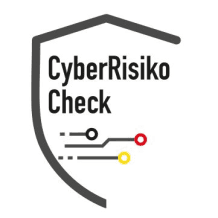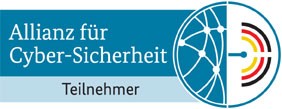Introduction to Zero Trust Access
Zero Trust Access is a security concept based on the premise that no user or application is inherently trustworthy, whether inside or outside a network. Instead of following the traditional security approach, where everything within the perimeter is considered trustworthy, Zero Trust assumes that threats can come from both outside and inside. Consequently, it requires continuous verification and validation of every access request.
The Origins of the Zero Trust Model
The concept of Zero Trust was first developed by Forrester Research. It grew out of the need to establish modern security measures that address the increasing rise of cloud services and mobile devices. Since traditional security models are often vulnerable to attacks affecting internal networks, Zero Trust offers a solution that focuses on securing data and resources.
The Core Principles of Zero Trust
1. Never trust, always verify: Regardless of the source or destination of the traffic, authentication and authorization are always required.
2. Grant least privilege: Users and applications are given only the minimum necessary access rights, so that the damage in the event of an attack is minimized.
3. Micro-segmentation: Networks are divided into smaller, manageable segments, so that the data flow remains restrictive and controlled.
Benefits of Zero Trust Access
Zero Trust Access offers a variety of benefits for organizations, including:
- Increased security: Since every connection and user is continuously verified, the systems are significantly more resilient to attacks.
- Better visibility: Administrators gain complete oversight of the traffic and access attempts in their network.
- Reduced risk of data breaches: By limiting access rights, the potential risk of data loss is significantly reduced.
Implementing a Zero Trust Model
Implementing a Zero Trust model requires careful planning and execution. The steps for implementation include:
1. Identifying critical data and assets: Start by identifying and classifying sensitive and valuable resources within the network.
2. Securing and defining user identities: Implement multi-factor authentication (MFA) and secure all user identities.
3. Continuous network monitoring: Implement monitoring tools to detect and respond to unusual activities immediately.
4. Network segmentation: Divide the network into smaller segments to restrict access to sensitive data on a need-to-know basis.
Challenges and Considerations
Despite the many benefits, transitioning to a Zero Trust model can present some challenges:
- Complexity in implementation: Transitioning from traditional security models to a Zero Trust approach requires significant restructuring and can be time-consuming.
- Costs: Introducing new technologies and security measures can incur substantial costs.
- Requirement for user acceptance: Users must accept and embrace the new security awareness and the accompanying changes in access control.
Conclusion
Zero Trust Access provides a robust and modern approach to securing corporate networks. Through continuous verification, micro-segmentation, and minimizing access, it significantly enhances security against both external and internal threats. When companies internalize and implement this security philosophy, they are better equipped to withstand the diverse threats of the modern digital landscape.
However, Zero Trust is not an immediate panacea but a long-term approach that requires continuous adaptation and optimization. Companies must weigh the challenges associated with implementation and plan accordingly.
Zero Trust Access in Germany: Current Developments
The importance of zero trust access in Germany is continuously growing. According to recent studies by the Federal Office for Information Security (BSI), German companies are increasingly affected by cyber threats. The Bitkom association reports that 84% of German companies have fallen victim to cyberattacks in the past two years.
Especially in the field of zero trust access, the following trends are noticeable:
Increasing investments in preventive security measures
Heightened awareness of comprehensive security concepts
Integration of zero trust access into existing compliance frameworks
EU Compliance and Zero Trust Access
With the introduction of the NIS2 directive and stricter GDPR requirements, German companies must adjust their security strategies. Zero Trust Access plays a central role in meeting regulatory requirements.
Important compliance aspects include:
Documentation of security measures
Regular review and updates
Proof of effectiveness to regulatory authorities
Practical Implementation in Corporate Daily Life
Integrating zero trust access into corporate everyday life requires a structured approach. Experience shows that companies benefit from a gradual implementation that considers both technical and organizational aspects.
Think of zero trust access as an insurance policy for your business: The better prepared you are, the lower the risk of damage from security incidents.
Additional Security Measures
For a comprehensive security strategy, you should combine zero trust access with other security measures:
Vulnerability Management - Systematic vulnerability management
Penetration Testing - Comprehensive security tests
Security Hardening - Employee awareness training
Incident Response Plan - Preparation for security incidents
Conclusion and Next Steps
Zero Trust Access is an essential component of modern cybersecurity. Investing in professional zero trust access measures pays off in the long run through increased security and compliance adherence.
Do you want to optimize your security strategy? Our experts are happy to advise you on the implementation of zero trust access and other security measures. Contact us for a free initial consultation.
🔒 Act now: Have your current security situation assessed by our experts
📞 Request a consultation: Schedule a free initial consultation on zero trust access
📋 Compliance Check: Review your current compliance situation
📌 Related Topics: Cybersecurity, IT Security, Compliance Management, Risk Assessment




